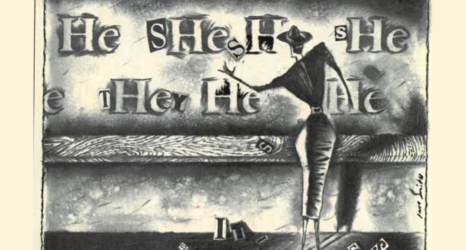Last Monday, Feminist Law Professors blogged about an Instagram photo posted by The New York Times‘ small business writer Adriana Gardella. The photo (left) shows how far sexist messages have reached—all the way back to infancy.
On top of the clearly stereotyped pink cards for girls and blue cards for boys, is the “insidious” (as Gardella called it) message that girls are meant to be beautiful and boys are meant to be brilliant. It’s not that girls shouldn’t be told they are beautiful, or boys told they’re brilliant, but the messages need to be interchangeable. How hard could it have been for Paper & Cloth to make a “Brilliant Baby Girl” card and a “Beautiful Baby Boy” card as well? (And maybe even use new colors that aren’t so tired out by our incessant stereotyping?) The U.K. design studio sells their products in shops throughout Europe and the U.S.
This “insidious” message is familiar and disturbing: Girls are supposed to value beauty over intelligence. Beauty does not require agency and so girls are subtly stripped of their own through such messaging. In a world where women and girls are consistently sexualized and marginalized, is it really necessary to start so young? Paper & Cloth ought to learn a lesson from Geena Davis and work toward gender equality.
David and Myra Sadker and Karen R. Zittleman said it best in their book Still Failing at Fairness:
The media floods us with restricted gender images of female beauty and male macho. Blatant sexist images inundate movies, television and advertising, but it is the even more subtle sexist messages that can shape how we view our world.
Let’s not give in to these subtle messages that girls are to be looked at and boys engaged with. Tell us what you think of these greeting cards.





